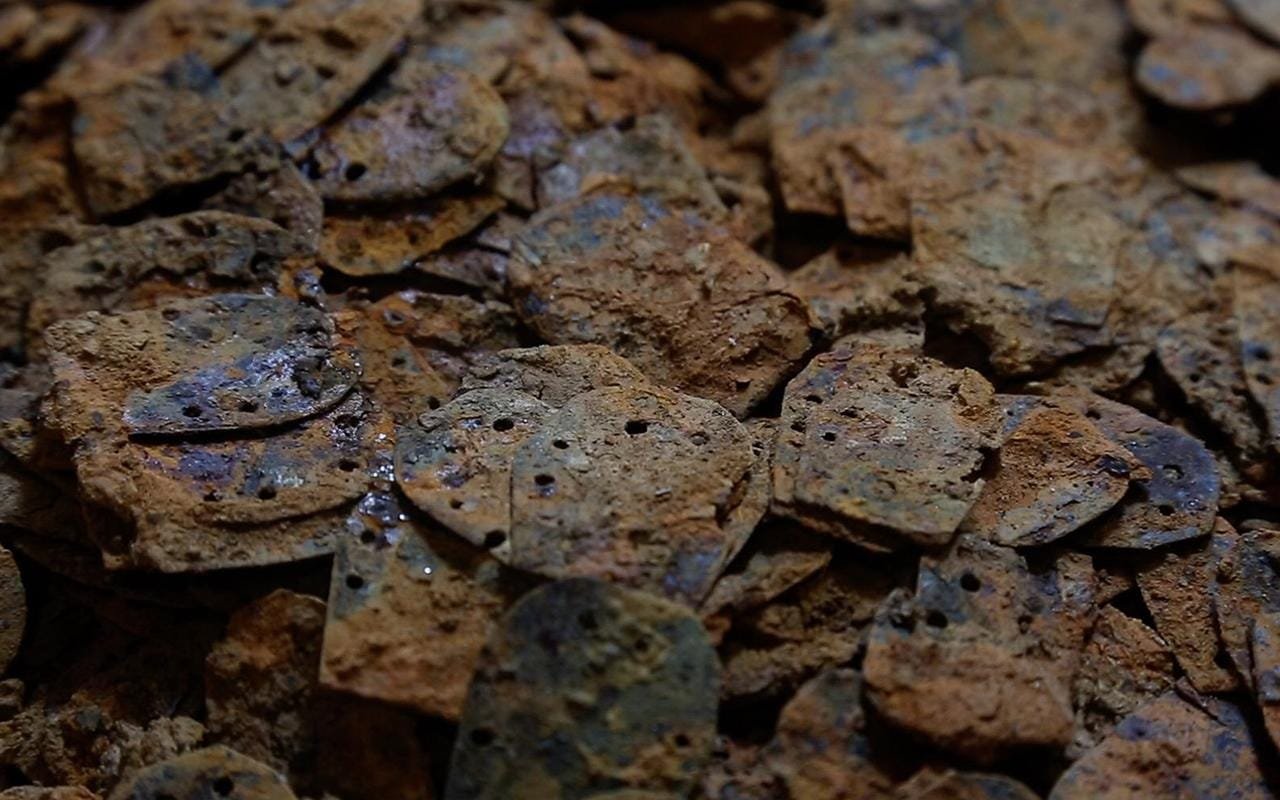Archaeologists have unearthed over 6,000 pieces of fish-scale armor in the tomb of Liu He, Marquis of Haihun, located in Nanchang, Jiangxi Province, China, showcasing advanced craftsmanship from the Western Han Dynasty (206 BCE–CE 25).
 Detail of the armor pieces unearthed from the tomb. Credit: Jiangxi Provincial Insтιтute of Cultural Relics and Archaeology
Detail of the armor pieces unearthed from the tomb. Credit: Jiangxi Provincial Insтιтute of Cultural Relics and Archaeology
Liu He was a historical figure of intrigue, being the grandson of Emperor Wu of Han and son of the King of Changyi. Ascending to the throne as King of Changyi at the tender age of four, his life took dramatic turns. In 74 BCE, the influential minister Huo Guang installed Liu He as emperor following the death of Emperor Zhao. However, his reign was short-lived, lasting only 27 days due to allegations of misconduct. Historical records cite 1,127 instances of improper behavior. Consequently, Liu He was deposed, stripped of his тιтles, and exiled. In 63 BCE, he was granted the тιтle Marquis of Haihun and lived out his remaining years in relative obscurity until his death in 59 BCE.
The tomb of Liu He, discovered in 2011 during a rescue excavation prompted by looting reports, is among the best-preserved Western Han burial sites. It contains an extraordinary array of over 20,000 artifacts, including gold coins, bronze lamps, lacquerware, and even the earliest known portrait of Confucius.
The fish-scale armor, unearthed from the western section of the tomb’s outer chamber, was discovered alongside swords and other weaponry. Archaeologists believe the armor was originally stored in lacquer boxes, as indicated by traces of patent leather found at the site. Over time, these boxes decayed, leaving the armor and weapons in a disorganized heap.
The excavation team, led by Yang Jun of the Jiangxi Provincial Insтιтute of Cultural Relics and Archaeology, carefully removed the pile as a soil block to prevent further deterioration caused by groundwater intrusion from nearby Poyang Lake. The items were then transported to the Nanchang Museum of the Han Dynasty Haihunhou State Ruins for laboratory analysis. After two years of meticulous work, researchers restored approximately 6,000 individual armor plates.
The armor represents a unique composite design, crafted from lacquered iron, copper, and leather—a stark departure from the single-material armors typically ᴀssociated with the Han Dynasty. Bai Rongjin, a research fellow at the Insтιтute of Archaeology, Chinese Academy of Social Sciences, explained: “The smallest armor piece measures only 1 centimeter wide and 0.2 centimeters thick. This indicates a highly refined forging process, as smaller plates require more pieces to construct the armor, reflecting an advanced level of craftsmanship.”
Most armor pieces from the Han Dynasty measure between 4 and 10 centimeters, with even the exquisite armors of Prince Liu Sheng’s tomb measuring 2 to 3 centimeters in width. The unprecedented size and composite nature of these plates underscore the technological advancements in armor-making during Liu He’s era.
The tomb’s burial environment posed significant challenges to preservation. According to Yang Jun, earthquakes and rising groundwater levels from Poyang Lake rendered the armor fragile and thin. Despite these difficulties, the discovery remains a monumental contribution to understanding Han Dynasty military technology.
Combining iron, copper, and leather, the armor exemplifies the era’s craftsmanship and innovation, offering an invaluable resource for future research.





